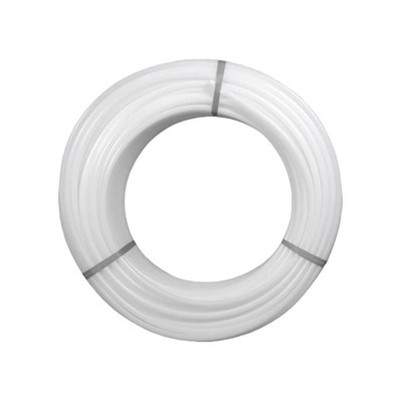What is the sound - transmission class of PE - Xa/EVOH Pipe?
Leave a message
Hey there! As a supplier of PE-Xa/EVOH Pipe, I often get asked about the sound - transmission class of these pipes. So, I thought I'd write this blog to break it down for you.
First off, let's understand what sound - transmission class (STC) is. STC is a single - number rating that describes how well a building partition, like a wall or in our case, a pipe, reduces sound. The higher the STC rating, the better the partition is at blocking sound. It's measured in decibels (dB), and it gives you an idea of how much noise from one side of the partition won't make it to the other side.
Now, when it comes to PE - Xa/EVOH pipes, their sound - transmission characteristics are pretty interesting. PE - Xa stands for cross - linked polyethylene type A, and EVOH is ethylene - vinyl alcohol copolymer. These materials are combined to create a pipe that has some unique properties.
PE - Xa is known for its flexibility, durability, and resistance to chemicals. It can handle high temperatures and pressures, which makes it a great choice for plumbing systems. EVOH, on the other hand, is a barrier material. It has excellent oxygen barrier properties, which helps prevent corrosion in the pipes and the connected systems.
But how do these materials affect the sound - transmission class? Well, the flexibility of PE - Xa plays a big role. Unlike rigid metal pipes, PE - Xa can absorb and dampen vibrations. When water flows through the pipes, it creates noise. With rigid pipes, these vibrations can travel easily through the pipe walls and into the surrounding environment. But PE - Xa pipes can soak up a lot of these vibrations, reducing the amount of noise that gets transmitted.
The EVOH layer also contributes to the sound - reduction. The dense structure of EVOH acts as an additional barrier to sound waves. It helps to trap the sound within the pipe and prevent it from leaking out.
In general, PE - Xa/EVOH pipes tend to have a relatively good STC rating compared to some other types of pipes. However, the exact STC rating can vary depending on a few factors.


One factor is the pipe size. Larger pipes usually have a different sound - transmission characteristic than smaller ones. The diameter of the pipe affects how the water flows and how the vibrations are generated. A larger pipe may have more space for the water to move around, which could potentially lead to different noise levels.
The thickness of the pipe walls also matters. Thicker walls can provide better sound insulation. A thicker PE - Xa layer can absorb more vibrations, and a thicker EVOH layer can be more effective at blocking sound waves.
The installation method is another crucial factor. If the pipes are installed properly, with the right supports and insulation, it can significantly improve the sound - transmission class. For example, using rubber gaskets at the joints can help reduce the transfer of vibrations from one pipe section to another. And adding insulation around the pipes can further dampen the noise.
To give you an idea of the typical STC ratings, well - installed PE - Xa/EVOH pipes can have an STC rating in the range of 30 - 40 dB. This means that they can block a fair amount of noise. For comparison, a normal conversation is around 60 dB. So, these pipes can cut down a significant portion of the noise generated by water flow.
Now, why is the sound - transmission class of PE - Xa/EVOH pipes important? In residential settings, it's all about comfort. No one wants to hear the constant gurgling and banging of water pipes in their home. Quiet pipes can make a big difference in the overall living experience.
In commercial buildings, such as hotels or hospitals, noise reduction is even more critical. In hotels, guests expect a peaceful environment. Noisy pipes can ruin their stay and lead to negative reviews. In hospitals, quiet pipes are essential to avoid disturbing patients and to maintain a calm and healing atmosphere.
As a supplier, I've seen firsthand the benefits of using PE - Xa/EVOH pipes in different projects. We've had customers who were initially worried about the noise levels in their buildings, but after switching to our pipes, they were really happy with the results.
If you're in the market for pipes and you're concerned about sound transmission, PE - Xa/EVOH pipes are definitely worth considering. They offer a great combination of durability, chemical resistance, oxygen barrier properties, and most importantly, good sound - reduction capabilities.
Whether you're a contractor working on a new building project or a homeowner looking to upgrade your plumbing system, I'd love to talk to you about how our PE - Xa/EVOH Pipe can meet your needs. If you have any questions about the sound - transmission class or any other aspects of our pipes, feel free to reach out. We can provide you with more detailed information and even samples if you'd like to test them out.
So, don't let noisy pipes ruin your project. Contact us today and let's start a conversation about how we can help you get the quiet and reliable plumbing system you deserve.
References:
- "Handbook of Plumbing Engineering"
- "Materials Science for Construction"
- Industry reports on pipe performance and sound - transmission characteristics.




